Nutritionist-recommended healthy snacks on the go
Eating snacks can provide the energy you need in between meals or pre- or post-workout. A nibble here and there can satisfy food cravings and hold you over until your next meal. And most importantly, if you’re on the go, it’s important to resist unhealthy snacks, like a large bag of chips from the vending machine, and opt for healthier options instead. Yes, snacking can be healthy if done correctly. (These are the 28 healthy snacks to satisfy the munchies.)
We spoke with top registered dietitians and nutritionists from across the country who share the healthy snacks they always keep in their bags. (Also, check out the best foods to eat when you’re hangry.)

Apples
The old apple-a-day advice is still very much alive and well among health practitioners. Keith-Thomas Ayoob, RD, associate clinical professor in the department of pediatrics at Albert Einstein College of Medicine in Bronx, New York, often keeps an apple with him during the day. “It’s loaded with pectin to help keep you feeling full, and there are plenty of varieties for your taste,” he says. “Fuji, Honeycrisp, and Cripps Pink (Pink lady) are my favorites,” he says, noting that large apples run about 100 calories. For the staying power of protein, consider adding a tablespoon of peanut butter or a cheese stick. (Here are 30 more healthy snacking ideas for adults.)

Dark chocolate
An ounce of dark chocolate has just 150 calories and is loaded with antioxidants. “Healthy indulgences like dark chocolate—at least 70 percent cocoa—keeps you motivated to stay on a healthy eating plan,” Ayoob says. “And an ounce is a lot, for very dark chocolate.” (These are the other health benefits of chocolate.) Chocolate is great as long as you don’t eat it late at night. (Here are the 13 foods nutritionists never eat before bed.)

Fiber One cereal
Any variety of Fiber One cereal is a good choice, Ayoob says, but his favorite is the original—and no, they’re not paying him to say so. “Try any high-fiber cereal you like,” he says. “This snack works well with anything you might be drinking, it’s only about 100 calories or less for most high-fiber cereals, and most people need way more fiber than they get.” (Don’t miss the 19 foods nutritionists always buy at Trader Joe’s.)
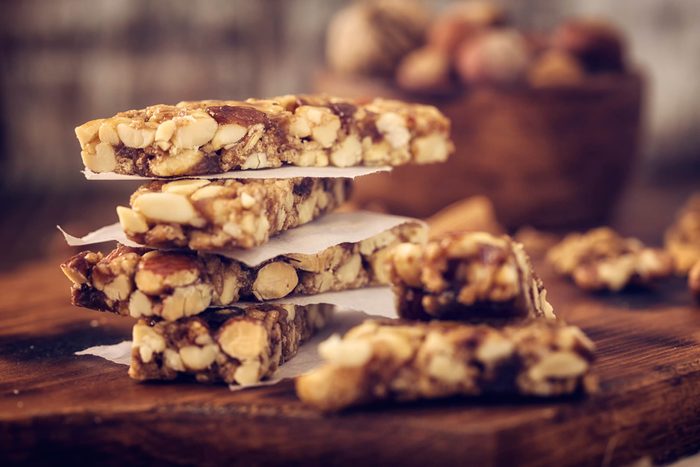
Nutrition bars
“The bars I choose are less than 200 calories each, low in sugar, and have more than 7 grams of protein and 3 grams of fiber,” says Sheryl Lozicki, RDN, Grand Rapids, Michigan. Though the flavor is a personal preference, Lozicki recommends looking for bars with both fiber and protein to stay fuller longer and maintain a steady supply of energy. (Check out these 10 homemade energy bars that are sugar savvy.)
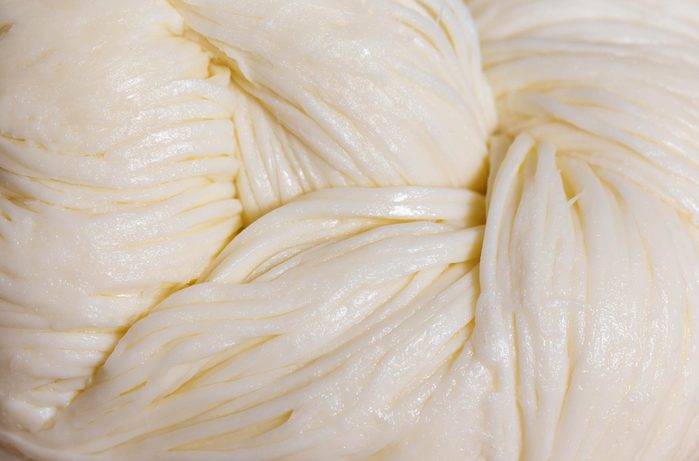
String cheese
Joselynne Boschen, fitness and lifestyle expert at the health app, Lifesum, says that string cheese will fulfill any craving you have. “Cheese falls under the fat category of your balanced meal ratio chart,” she says. “Fat, when consumed in small amounts, will curb your appetite and get you through until the next meal.” (Here are the signs you need more good fats in your diet.)

Hard boiled eggs
Eggs are the best food for any time of day, according to Boschen. “What I love about eggs for weight loss is that they are the best on-the-go protein source there is,” he says. “Hard boiled eggs are easy to pre-prepare and put into little zippy bags to grab as you run out the door. If you are concerned about cholesterol,” she adds, “simply remove the yolk.” People can eat up to one whole egg per day, per the American Heart Association. (Make sure you know the 20 foods that aren’t worth the extra calories.)

Flavored waters
Sometimes thirst masquerades as hunger, so it’s a good idea to try drinking first. “Put cucumber, lemon, raspberries, mint, or watermelon in your bottled water,” Boschen suggests. “These healthy, natural flavors make it easier to hydrate.” (Also, check out the 10 most hydrating foods to eat.)
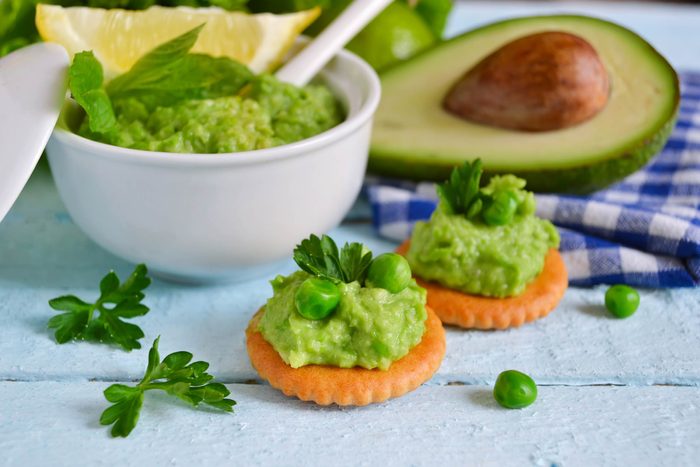
Avocados with whole wheat crackers
This combo is a favorite for Rebecca Lewis, in-house dietitian at HelloFresh. “Avocados are the fruit/veggie with the highest fiber content—one avocado has approximately 10 to 15 grams of fiber—which means they keep you fuller for longer. Also, due to their mono and polyunsaturated fat content (healthy fats), avocados are a great substitution for foods rich in saturated fat,” she says. When paired, with whole wheat crackers, which Lewis says are an excellent source of whole grains, it’s a well-balanced snack. “You’ll be getting your daily recommended intake of fiber—which helps to keep us full and helps curb the desire to snack,” she adds. (Try chowing down on these 30 other snacks that can help you lose weight.)

Bananas and peanut butter
Bananas are naturally sweet and creamy, not to mention easy to tote as a snack since they come in their own casing, Lewis says, adding that peanut butter is an excellent source of fiber and healthy unsaturated plant-based fats. “Just make sure to eat in moderation as one tablespoon has 7 grams of fat and 63 calories. Also, when buying peanut butter, read the label to ensure that there are no added sugars or high fructose corn syrup, and no hydrogenated oils,” Lewis adds. (Here are 8 healthy recipes for overripe bananas.)
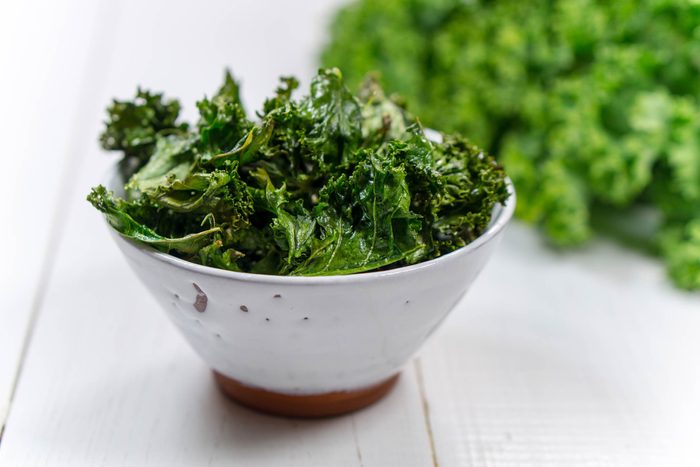
Kale chips
“Kale chips are a wonderful substitute for other high-calorie, unhealthy snack foods like cookies, potato chips, or candy, which can contain more than 300 calories per serving,” says Wendy Baruchowitz, a Rye, New York-based integrative nutritionist and health counselor and author of the new cookbook Food That Cares: A Restorative Approach to Health. Kale is an excellent source of vitamin K, A, and C and a good source of minerals like manganese, copper, iron, and calcium. One cup of kale contains approximately 35 calories and 3 grams of fiber, which plays a crucial role in weight-loss management. What’s more, baked kale still retains all its nutritional value, leaving you with a satisfying, low-calorie, nutrient-dense snack.” Don’t be fooled by these 50 “healthy” snacks that are actually bad for you.
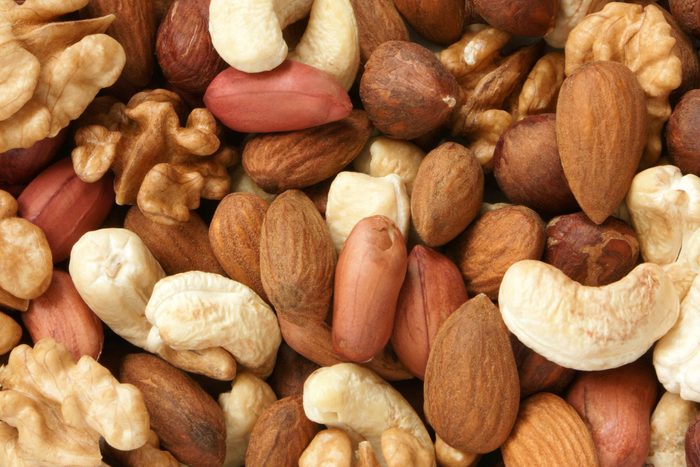
Almonds, cashews, or hazelnuts
Raw and unsalted nuts are a good source of healthy fats and protein to balance blood sugar levels, keep energy levels up throughout the day, and feel full and focused, says Rene Ficek, RDN and the lead nutrition expert at Seattle Sutton’s Healthy Eating. “Cashews, almonds, and hazelnuts are also high in magnesium, which plays a key role in converting sugar to energy. Nuts are also filled with fiber and protein to stave off hunger. Keep a bag of mixed nuts or trail mix in your purse or desk drawer to stay energetic all day.” Plus, they can help you sleep better too. (Start adding these 16 healthy snacks to your bedtime routine for a good night’s sleep.)

Edamame
High in protein and fiber, edamame can be eaten several different ways. “Frozen edamame bought in the shell can be steamed and eaten out of the shell for a great snack or appetizer, whereas frozen shelled edamame can be thrown into pastas, soups, and even made into a delicious hummus spread. They can also be bought roasted for a tasty and crunchy mid-afternoon pickup,” Ficek says. Pop a few in a plastic baggie and store them in your backpack or purse for an easy-to-access snack. (Here are the 15 foods nutritionists try to eat every day.)
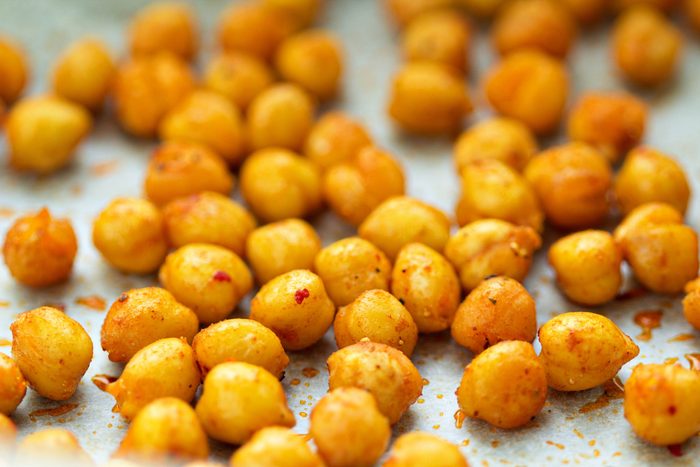
Roasted chickpeas
Valerie Agyeman, RD, and communications manager for Seafood Nutrition Partnership, suggests roasted chickpeas because they’re very high in protein and fiber. “Great for vegetarians and vegans trying to incorporate more protein sources into their diet,” she says. “Make a batch at the beginning of the week and have it ready to take on-the-go!” (Here are the health benefits of a vegan diet.)
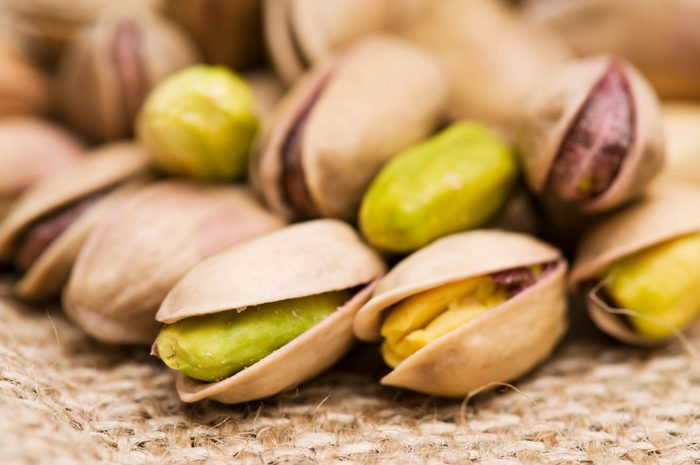
Pistachios
Jackie Newgent, RDN, a New York City-based culinary nutritionist, stashes a reusable container (or zip-top bag) with one serving of in-shell pistachios in her bag—that’s 49 nuts to be exact. “Pistachios are an ideal snack since they’re a good source of both protein and fiber, which can help you feel satisfied. Plus, in-shell pistachios may help you fool yourself full because the leftover shells may provide a visual cue for portions, potentially helping to curb intake,” she says. As a bonus, Newgent says, you’ll likely sit and slow down to enjoy them rather than mindlessly nibbling them on-the-run. Don’t have time to portion out your own—or short on handbag space? Wonderful Pistachios make 100-calorie packs, great for when you’re in a pinch. (Always keep these 9 snacks in your desk drawer at work.)

Tuna pouch
This protein-packed, portable snack requires no draining and no can-opening. “Each tuna packet contains 16 grams of protein and 100 percent of your daily need of the free-radical-fighting antioxidant selenium,” notes the health.com article. If you’re not into plain tuna, try marinated flavors like lemon pepper. (Check out the canned foods nutritionists buy and avoid.)
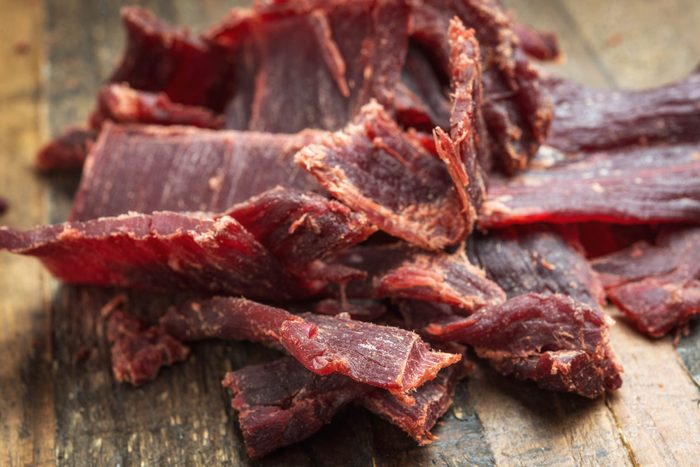
Jerky
Meat jerky is made with pork, beef, and turkey, and now comes in inventive flavors. One ounce of jerky has 7 to 11 grams of protein for a slim 70 to 90 calories. Just make sure to look for nitrate-free brands and check the amount of sodium, since jerky is typically high in salt. (Jerky is also one of those healthy foods that’s gotten an unfair bad rap.)

